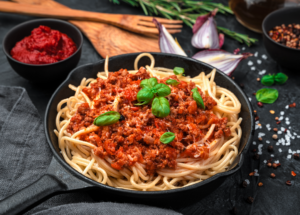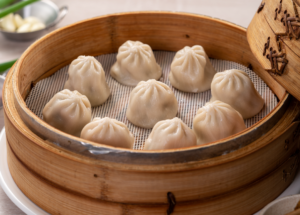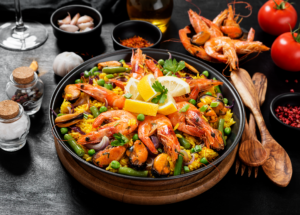Exploring the World Through Food
with Can Do Kids Worldwide
Food is more than just something we eat. It’s a reflection of a country’s geography, history, and culture. By exploring different dishes from around the world, students can learn about the traditions, climates, and customs of other countries in an engaging and memorable way. Here are five dishes from different parts of the world that provide an exciting opportunity to teach students about culture and geography.
Here are 5 famous dishes from around the globe:

1. Croissant, France
The croissant, a buttery, flaky pastry, is one of the most iconic foods associated with France. Originating in Austria and later perfected in France, the croissant is enjoyed for breakfast or as a snack throughout the day. Its crescent shape is said to be inspired by the symbol of the moon, representing victory after the defeat of the Ottoman Empire. The croissant reflects French culinary artistry, showcasing the importance of baking techniques and the country’s love for pastries.
Fun Fact: The croissant’s origins date back to the 17th century, but it became popular in France in the early 20th century after being introduced in Parisian cafés.

2. Tacos, Mexico
Tacos are a staple of Mexican cuisine and an excellent way to explore the diverse flavors and ingredients used in Mexican cooking. Typically made with a soft or hard corn tortilla filled with a variety of ingredients like grilled meats, vegetables, and salsas, tacos offer a glimpse into Mexico’s agricultural and culinary traditions. This dish can also help students understand the importance of corn in Mexican culture and how food reflects the country’s rich history and regional diversity.
Fun Fact: The taco is thought to have originated in Mexico’s silver mines, where miners would wrap food in tortillas to eat during their shifts!

3. Spaghetti Bolognese, Italy
Spaghetti Bolognese is a popular Italian dish made with pasta and a rich, meaty tomato sauce. It’s a fantastic way to teach students about Italy’s agricultural practices, the importance of olive oil and tomatoes, and the country’s focus on fresh ingredients. This dish also offers an opportunity to talk about Italy’s regions and how food can vary greatly across the country. While Spaghetti Bolognese is widely loved, the traditional Bolognese sauce comes from the city of Bologna and is often served with tagliatelle pasta.
Fun Fact: While Spaghetti Bolognese is famous in many countries, in Italy it’s often referred to as “ragù” and served with different types of pasta.

4. Dim Sum, China
Dim Sum is a Cantonese meal made up of a variety of small dishes, often served with tea. It’s a perfect way to explore the diversity of Chinese cuisine, as Dim Sum includes a wide range of steamed, fried, and baked items such as dumplings, buns, and rolls. This meal not only introduces students to Chinese food but also allows for discussions on the tradition of tea-drinking in China, the cultural importance of sharing food, and how meals bring people together in Chinese culture.
Fun Fact: The tradition of Dim Sum originated in Guangdong province, where people would stop at tea houses to enjoy a meal while drinking tea, a practice that dates back centuries!

5. Paella, Spain
Paella is a famous Spanish dish from the region of Valencia, known for its vibrant colours and rich flavours. Traditionally made with rice, saffron, vegetables, and a variety of meats or seafood, Paella reflects Spain’s diverse landscapes and agricultural history. It’s a perfect dish to discuss the Mediterranean climate, the use of saffron, and the cultural importance of communal eating, as paella is often shared among groups of people.
Fun Fact: The name “Paella” comes from the Spanish word for “pan,” referring to the large, shallow pan in which the dish is traditionally cooked.
Bringing Food Into the Classroom
These dishes are more than just tasty treats. They are windows into different cultures, histories, and ways of life. By teaching students about global cuisine, you can engage them in discussions about geography, history, and cultural appreciation. You might even consider hosting a global food day in the classroom where students can try one of these dishes or create their own versions of these cultural staples!
Food is a fun, engaging, and multi-sensory way to teach students about the world. Join Can Do Kids Worldwide to explore even more delicious dishes and learn about the cultures behind them!




